- Administrator
- Albums and Singles
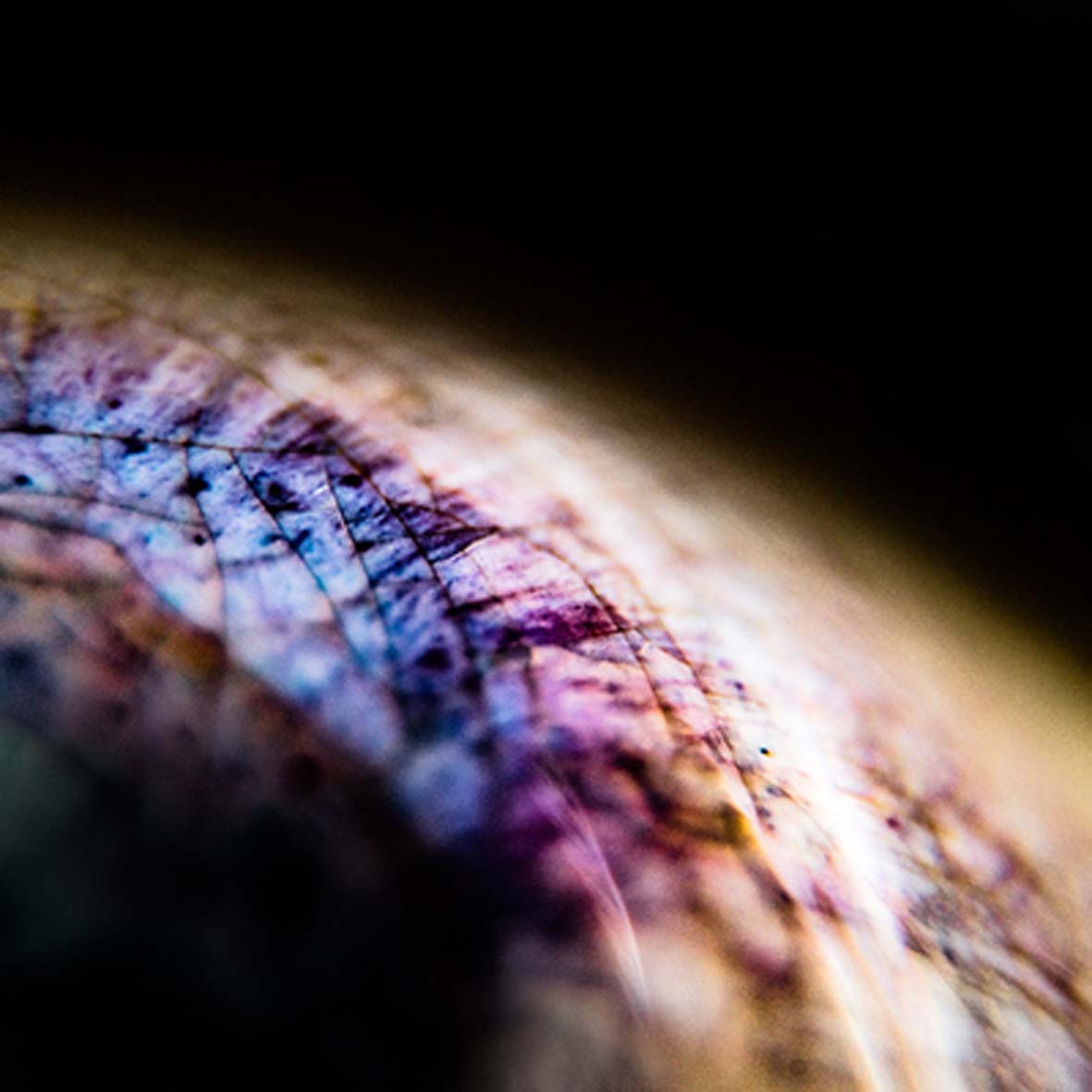 This latest EP is something of a daring experimental coda to this year’s excellent Borders, as studio wizards James Ginzburg and Paul Purgas attempt to translate their crushing, frequency-saturated onslaught into purely acoustic recording techniques. Obviously, there has been a lot of foreshadowing throughout the duo’s career hinting at this direction given Emptyset's longstanding fascination with architecture and natural resonance, but it was not until Borders that the essential missing piece was added to the formula: the viscerally biting snarl and rattle of a homemade zither. Given that Skin further constrains an already hyper-constrained vein of minimalism, this EP is primarily just for existing fans eager to see how well Ginzburg and Purgas handle pushing their vision to a seemingly self-sabotaging extreme, but a few of these simple variations survive the transformation with quite a lot of raw power intact.
This latest EP is something of a daring experimental coda to this year’s excellent Borders, as studio wizards James Ginzburg and Paul Purgas attempt to translate their crushing, frequency-saturated onslaught into purely acoustic recording techniques. Obviously, there has been a lot of foreshadowing throughout the duo’s career hinting at this direction given Emptyset's longstanding fascination with architecture and natural resonance, but it was not until Borders that the essential missing piece was added to the formula: the viscerally biting snarl and rattle of a homemade zither. Given that Skin further constrains an already hyper-constrained vein of minimalism, this EP is primarily just for existing fans eager to see how well Ginzburg and Purgas handle pushing their vision to a seemingly self-sabotaging extreme, but a few of these simple variations survive the transformation with quite a lot of raw power intact.
Any serious discussion of Skin has to begin by noting that Emptyset are willfully plunging into a stylistic cul de sac from which there is absolutely no escape without some considerable reinvention: Ginzburg and Purgas have taken minimalism so far that they have stripped away all melody, almost all rhythm, almost all harmony, and any possible kind of compositional arc.What remains is essentially just the textures and overtones that can be generated from reverberating metal strings and their surrounding acoustic environment.Naturally, this puts Emptyset in similar territory to that of artists like Alvin Lucier and Ellen Fullman, but with a massive key difference: Purgas and Ginzburg have no interest in exploring the shifting, slowly evolving microtonal harmonies that giant buzzing strings can conjure up in a longform drone piece, opting to instead traffic in condensed and punchy displays of wall-shaking force.Skin sounds like what Fullman might have done if she had toured The Long String Instrument on bills with Motörhead for a few weeks and had bottles hurled at her head.The opening "Skin I" is the strongest distillation of that "punk minimalism" aesthetic, as it sounds like two people violently strumming the same one-note bass line on vibrantly buzzing and rattling strings.Initially, it is just a jangling textural assault, but gradually one of the strings is bent, creating some menacing-sounding harmonies.The real magic happens in the background, however, as a cloud of low-frequency tones slowly begins to shudder and distort while ghostly harmonics form unexpected patterns.It is a very cool and deceptively subtle trick that I suspect would be especially stunning in a live environment where I could actually feel the room and the air itself vibrate and transform as the undercurrent gathered power.
There is only so much that can be done with a homemade zither and a kick drum though, so the rest of this brief EP is devoted to exploring the limited spaces not already covered by "Skin I.""Skin II" reprises the slow-motion bass drum pulse of its processor, but eschews the frenzied and kinetic strumming for a single, slowly repeating chord that gradually produces an oscillating haze of overtones.Unfortunately, the piece is under 3 minutes long, so it is more of a "check out this trick!" experience than an actual satisfying composition."Eye I" is more a significant divergence for Emptyset, as an obsessively strummed single chord is joined by ritualistic-sounding vocal chanting that eventually coheres into something that resembles a stomping and lurching occultist procession.The closing "Eye II" is unsurprisingly more of the same, but with more of a rolling feel.It blossoms into something a bit more than mere variation in its second half, however, as a sneaking quake of blown-out-sounding sizzle creeps into the lower frequencies.More than any other piece, "Eye II" highlights the fundamental difficulty with Skin: if listened to casually, this EP basically just sounds like someone endlessly strumming a single string for 20 minutes with some minor variations in attack and rhythm.Also, the songs seem to end rather suddenly and arbitrarily without particularly going anywhere new.That is not necessarily a terrible thing, as there is plenty of activity lurking beneath the surface, but Skin is definitely a release that demands both volume and active, focused attention from listeners in order to be enjoyable.In a live setting, both of those prerequisites are guaranteed and there is probably an accompanying seismic, multisensory component to boot, but a recording simply is not the optimal presentation for what Emptyset are doing here.Unfortunately, a recording is the only way that most people will get to experience the duo's unique approach to sound art.
Skin's degree of success is far more interesting than its limitations however, and I have to admire Emptyset’s unwavering commitment to experimentation and ceaseless exploration.On purely musical terms, a release like this seems like a quixotic and questionable move after the wide release and creative breakthrough of Borders, but viewed on a purely artistic level, it is obvious that Emptyset HAD to take this detour before they could start planning their next frontier to conquer.That is the essential caveat for Skin: it is not the next evolution from the pummeling tour de force of Borders, but rather an appealing amuse-bouche that captures Purgas and Ginzburg performing some modest feats of sonic prestidigitation without the safety net of their usual studio enhancements.
 
Read More
- Administrator
- Albums and Singles
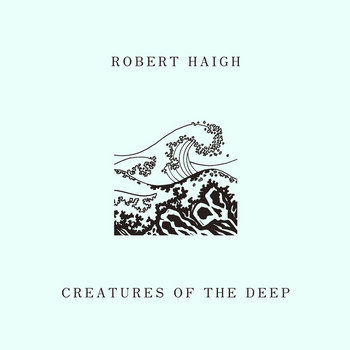
A new album of piano-driven ambient music from British composer Robert Haigh. Following in the path of his albums for the Japanese Siren label, Creatures of the Deep is an underground vantage of a meeting between the musical worlds of Harold Budd and Erik Satie. With a storied musical career that has ranged widely in style — from his industrial-avant-garde works on Nurse With Wound's United Diaries label as SEMA to his legendary ambient drum and bass records as Omni Trio on Moving Shadow — Robert Haigh's work occupies a space between music and mystery. With Creatures of the Deep, Haigh is at the peak of his powers. Among noir, minimal, neo-classical landscapes are robust scatterings of bright reflection and a musical expression that is subtle and elusive yet uniquely Haigh's in its voice and masterful execution. The closer we examine, the more is revealed, and the less is defined.
Out October 27 on Unseen Worlds.
Read More
- Administrator
- Albums and Singles
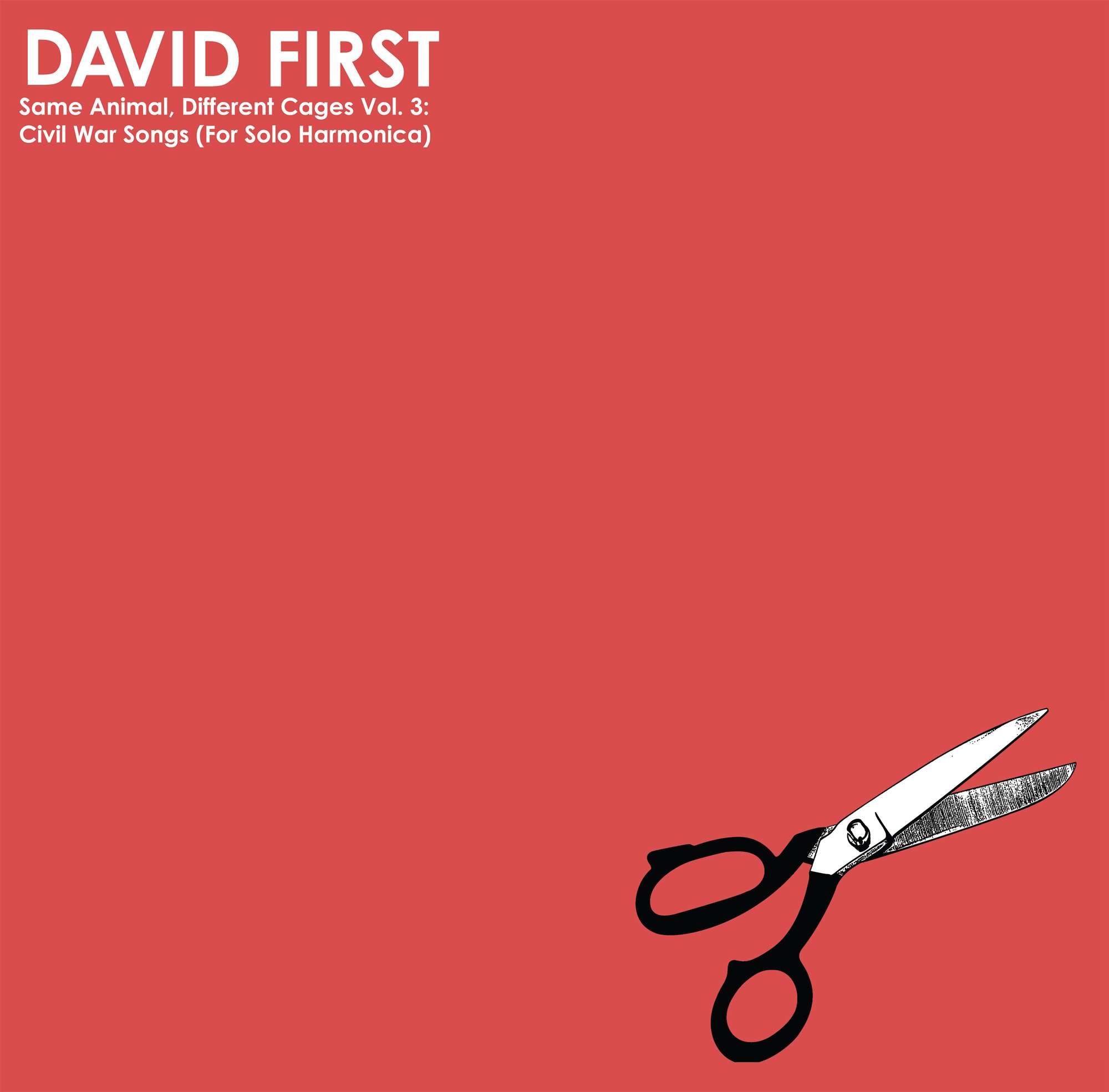 The third installment in David First's Same Animal, Different Cages album series (which are constructed from the use of a single instrument) is a contradictory piece of art. On one hand, it is clearly the most song-focused of the series thus far: a record of melodies and more conventional structures that contrast with the often pure experiments of the previous installments for guitar and analog synthesizer. However, by nature of the instrument used this time, a harmonica, I found it to be a more challenging work, but one that is still as rewarding as the releases that preceded it, and perhaps the most conceptually rich as well.
The third installment in David First's Same Animal, Different Cages album series (which are constructed from the use of a single instrument) is a contradictory piece of art. On one hand, it is clearly the most song-focused of the series thus far: a record of melodies and more conventional structures that contrast with the often pure experiments of the previous installments for guitar and analog synthesizer. However, by nature of the instrument used this time, a harmonica, I found it to be a more challenging work, but one that is still as rewarding as the releases that preceded it, and perhaps the most conceptually rich as well.
From the album and song titles, the instrument used, and the blood red cover art that envelops the record, the sense of conflict captured throughout Civil War Songs is a very distinct one.The harmonica has always been historically linked to the Civil War in the United States, and at times I could not help but imagine the music here being paired with old photos from the era and the ubiquitous narration of the Ken Burns documentary.First's playing of the harmonica is at times unconventional, however it is through this style that makes it sound contemporary: a time which is very reminiscent of the past.
As has been a hallmark of this series, David's playing throughout Civil War Songs is presented as purely as possible:no processing or effects.Or at least a minimal amount of the latter, since it is not clear if the tasteful amount of reverb that appears is an effect or just naturally occurring from the recording session.The playing brings out elements and sounds that are otherwise unexpected though, which is one of my favorite parts of the album.For example, "Hymns for the Sick and Poor" is harsh, but due to the natural resonance of the instrument and First's aggressive performance.The elongated opening notes to "Transition Chant" could easily be mistaken for a synthesizer, with its dissonant lower notes peppered with abrasive, sawtooth oscillator-like buzzes that permeate it.
These moments are scattered throughout the albums 11 songs, which vacillate somewhere between traditionalism and radical reconstructions of American folk music.Throughout "Song for the Righteous Earth Protectors" the notes are drawn out, a bit drone-like and bordering on unpleasant.The playing jumps between depressing and manic, with David coaxing out some pleasantly shrill and harsh sounds from his harp."Joy Sorrow Love March" and "My Family of Friends" lean a bit more toward traditional, with their conventional melodic progressions and reoccurring motifs.
Somewhere between these two extremes is a song like "Song for the Healing Sciences," in which First begins with conventional playing, but as the piece goes on he elongates selected notes, stretching them out and allowing the core, tonal components of the harmonica become the focus more than the melodies they inhabit.This strategy appears on "Dance for Balance, Strength and Will" as well, and at one point taking on a stuttering, repeating quality that almost resembles a broken record.
A superficial listen to Civil War Songs (For Solo Harmonica) may paint it as a traditional collection of new Americana folk songs, but nothing David First creates is intended to be taken at just face value.With just the one instrument he captures an entire history of the harmonica, but, perhaps more abstractly, the history of the United States, never shying away from the ugly and violent elements that are resurging in 2017.Let us just hope that the album is more indicative of reviving the music of the era, rather than the violent, divisive spirit in which it was originally conceived.
samples:
 
Read More
- Administrator
- Albums and Singles
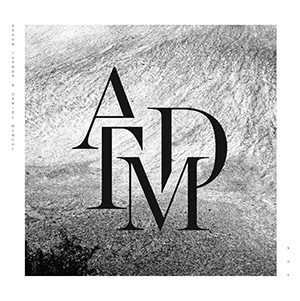 While the gargantuan, triple disc Sleeper from Daniel Menche is still relatively new, he and SIGE head Aaron Turner (he of an immense number of projects) also managed to find the time to record this collaborative LP. Recorded over a two year span, Nox is far more inviting and downright beautiful than I would have expected from two artists who have always shown hints of the sort in the past.
While the gargantuan, triple disc Sleeper from Daniel Menche is still relatively new, he and SIGE head Aaron Turner (he of an immense number of projects) also managed to find the time to record this collaborative LP. Recorded over a two year span, Nox is far more inviting and downright beautiful than I would have expected from two artists who have always shown hints of the sort in the past.
Menche and Turner have collaborated before, such as on 2015’s Crater (with the latter as Mamiffer, a project that also features Faith Coloccia), but Nox has a different feel to it by comparison.This is a single half-hour piece split across two sides of vinyl. There is a calmness to the album that is quite striking, something both artists are not necessarily a stranger to, but would hardly be the first adjective I think of to describe their respective bodies of work.
The opening moments are that of a droning, chanting voice (or voice-like sound) processed, stretched, and sustained.More ambiguous layers of sound are added: long, gliding sheets of sound that are quite gentle on their own, but are still imbued with a bit of darkness to them.The layers pass over each other exquisitely, sustaining the sense of peacefulness but also giving the piece far more depth than just a simple ambient workout.Occasionally some tastefully abrasive guitar squall cuts through the mix to darken things up a bit, but on the whole it remains serene and pleasant throughout.As the composition builds, Turner and Menche interweave more airy, voice-like passages within some churning, noisier segments as well, blending the light and dark expertly (a recurring theme in both of their individual discographies).Melodies arise out of the soft, droning sounds, and are nicely contrasted by less specific, textural layers that give a nice tactile crunch to the otherwise buoyant, drifting elements of the album.
From within the pensive moments, the dissonant guitar reappears once again, as do some largely untreated vocals from Turner, which take on the more ethereal qualities he has utilized with Jodis.While I would not necessarily characterize his voice as delicate, there is a light quality that certainly benefits the album.At times the layering and effects make for an almost operatic tone, with just the right amount of drama and blissful mood, but mixed with a churning, menacing bit of noise.The inhuman half of this pairing eventually engulfs the entire piece, collapsing it onto itself and then drifting slowly into emptiness and dissonance.
Nox, compared to the bulk of Aaron Turner and Daniel Menche's solo work, clearly emphasizes the often-obscured subtleties of their art, as well as the unabashed beauty that is less renowned than their more aggressive tendencies. The piece runs the full gamut of both artists' diverse discographies, drawing different elements but joining them in a way that showcases the complexity of both.Nox is a quite stunning record, one that bears the mark of both Menche and Turner, but one that focuses on the lesser recognized, but just as powerful side of their art.
samples:
 
Read More
- Administrator
- Albums and Singles
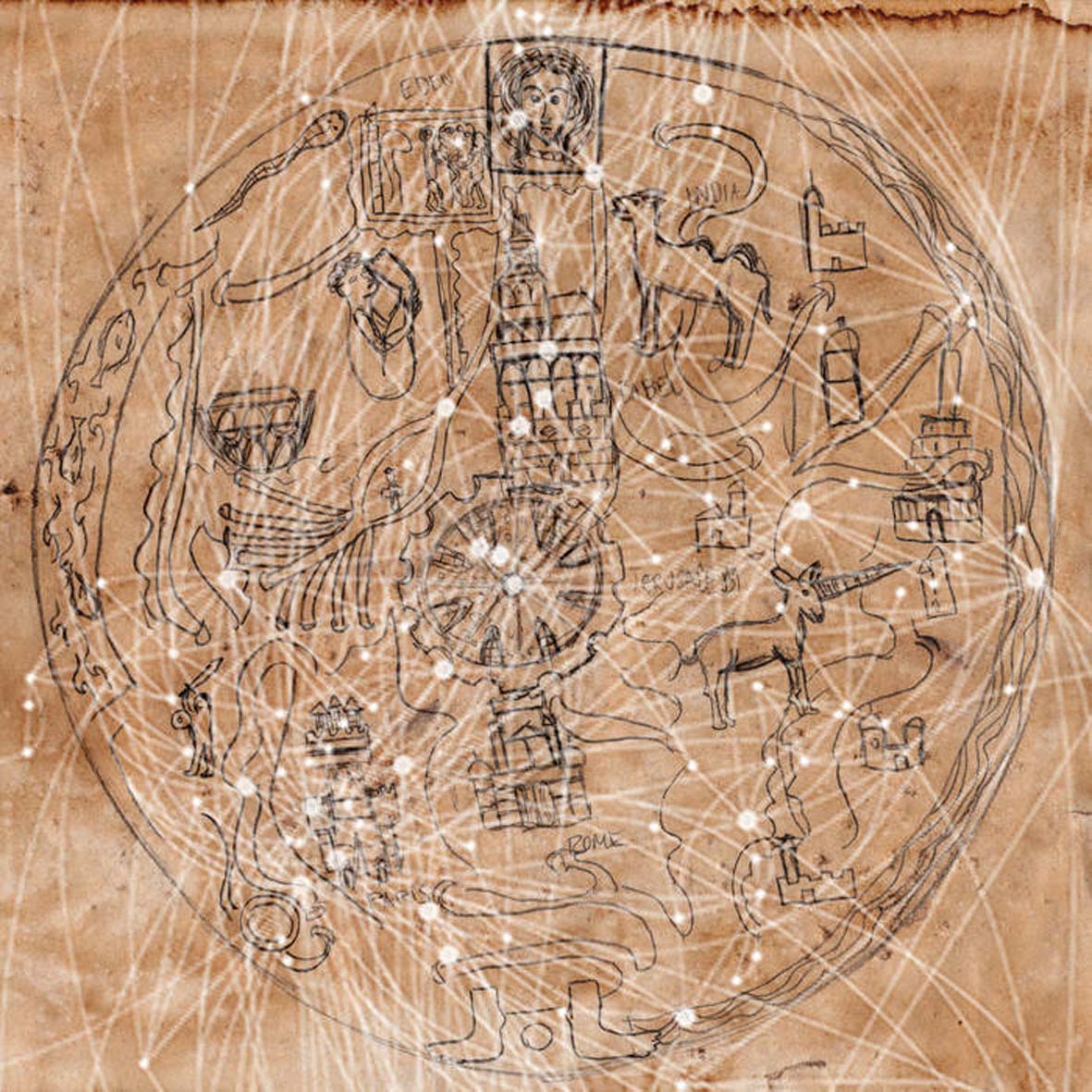 After two fine vinyl releases on Pomperipossa, Mark van Hoen and Mike Harding's mesmerizing sound collage project now takes a detour to Touch's Field Music imprint. While the transition to CD format does not seem to have made much of a structural impact (the album still feels like a single, abstract, and longform piece), Mappa Mundi is nonetheless a radically different album from last year's more musical A Perfect Blind. The abandonment of the more composed, melodic, and "structured" elements of their sound may seem like a deeply counterintuitive move after such a wonderful leap forward, yet Drøne prove themselves to be remarkably fluid and adept at changing their aesthetic to fit their conceptual inspirations. In this case, the stated objective is "tracing and describing the audio surrounding and occupying the planet Earth," which mostly translates into a hauntingly strange and mysterious immersion into a crackling entropy of phantom radio transmissions, squalls of static, choruses of insects, and creepily digitized voices.
After two fine vinyl releases on Pomperipossa, Mark van Hoen and Mike Harding's mesmerizing sound collage project now takes a detour to Touch's Field Music imprint. While the transition to CD format does not seem to have made much of a structural impact (the album still feels like a single, abstract, and longform piece), Mappa Mundi is nonetheless a radically different album from last year's more musical A Perfect Blind. The abandonment of the more composed, melodic, and "structured" elements of their sound may seem like a deeply counterintuitive move after such a wonderful leap forward, yet Drøne prove themselves to be remarkably fluid and adept at changing their aesthetic to fit their conceptual inspirations. In this case, the stated objective is "tracing and describing the audio surrounding and occupying the planet Earth," which mostly translates into a hauntingly strange and mysterious immersion into a crackling entropy of phantom radio transmissions, squalls of static, choruses of insects, and creepily digitized voices.
Mappa Mundi is ostensibly divided into five discrete sections, but trying to figure out where one ends and another begins feels like a very meaningless and unnecessary endeavor.I can say with completely certainty that the first section is sardonically titled "Voice of the People" though and that any sounds directly emanating from actual humans are conspicuously absent.Instead, the piece unfolds as a throbbing metallic rhythm of clanging machinery, cavernous echoes, and an ominous bass thrum.It sounds a lot like a field recording from an especially reverberant factory with all of the non-machine sounds excised.Gradually, however, it gives way to a garbled spew of jabbering electronics, like a duet between a dial-up modem and a disoriented robot.That curious scene is then disrupted by the sound of a jet taking off coupled with an erratic high-hat rhythm that bleeds into the sounds of a train.It would be exhausting to recount all of the similarly surreal segues that follow, but rest assured that there are many more and that Mappa Mundi kind of feels like someone artfully swirled several Chris Watson albums together into a disorienting mindfuck.Occasionally there are some ghostly sounds that seem like they may have originated from a synth, but they still feel like ambient sounds that Harding and van Hoen plucked from the ether rather than played.
To their credit, however, the duo are not content to simply cull evocative sounds from the world around them nor are they willing to linger on a single passage just because it sounds good: Mappa Mundi is a restlessly kinetic and endlessly evolving collage from start to finish.In fact, this aesthetic feels like a greater and more transcendent artistic achievement than previous Drøne albums in many ways: while not "composed" in the traditional sense, Mappa Mundi weaves an extremely complex, shifting, and very deliberate unreality with its recontextualized snatches of audio detritus.More hyperbolically put: Harding and van Hoen have moved beyond creating music and into creating worlds...or at least artfully conveying their perceptions of an existing one.I am not projecting any God-like genius onto Drøne , mind you, but the current shift in scope is definitely a trickier and more ambitious endeavor.
Once the initial industrial theme fully subsides, Mappa Mundi's primary canvas gradually becomes Harding’s shortwave radio recordings, transforming the album into a fitful crackling fog that mysterious shapes continually emerge from.In a bizarre way, this album creates the illusion that I have suddenly become clairaudient and hyper-sensitive, yet have not quite worked out how to harness those powers or choose what I focus on.Instead, I am just able to hear the cacophony of hidden signals and transmissions that are all around me every day and it is exactly that (a low-level cacophony) for the most part.Sometimes, however, there is a clearer signal and I can pick out an enigmatic tangle of overlapping voices.Other times, the background noise subsides enough to allow the usual ambient sounds of the world to peak through, and I get a glimpse of a church choir, children scampering around a playground, distorted announcements echoing though interior of a train station, or some excited dogs barking on their suburban lawns.At times, the juxtapositions are weirdly beautiful or cryptically haunting, but the real achievement is the unpredictably shifting and immersive world that van Hoen and Harding conjure from all their layers of static, hiss, garbled voices, and scrambled electronics.It may not culminate in any kind of mindblowing climax or epiphany, but the elaborate aural hallucination of previously hidden frequencies roiling throughout my previously structured sonic reality is quite a satisfying one.
As much as I find this album beguiling, I am hesitant to declare it the crown jewel of Drøne 's small discography, as the more melodic and accessible A Perfect Blind is a hard act to top.Perhaps that is why Mappa Mundi took such a divergent direction, evolving in a lateral way rather than building upon the success of the previous template.If this album has a flaw, it is merely that it is a bit more challenging and abstract than its predecessor, creeping much closer to field recording territory than the strains of experimental music that are more in vogue at the moment.This is definitely more "serious sound art" than "underground music," feeling like an intriguing new phase of the musique concrète tradition rather than an offshoot of a hip contemporary scene that happens to be somewhat influenced by the GRM milieu.Also, some listeners may find it a bit too understated and drifting when compared to the duo’s more conventionally dynamic previous work.I am not one of those listeners though, as I tend to find grand gestures and clear set pieces somewhat distracting and disruptive.For what it is, Mappa Mundi is pitch-perfect.As such, I am more than happy to give myself over to its unhurried and phantasmagoric flow.To my ears, this is one of the great secret treasures of the year.
 
Read More
- Administrator
- Albums and Singles
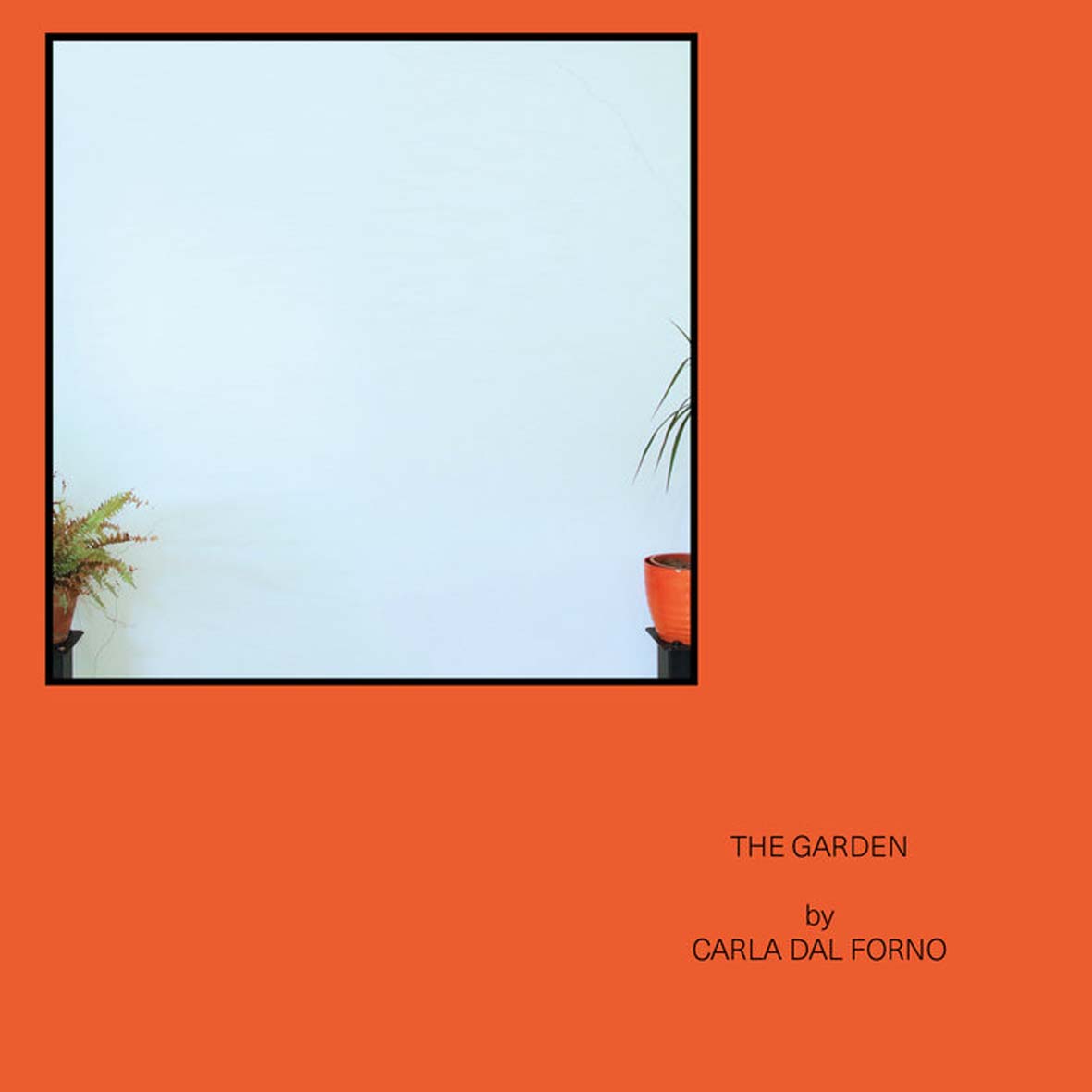 Carla dal Forno's latest EP is an absolute stunner, distilling her dark pop genius into four perfect gems of dreamy, intimate, haunted, and endearingly ramshackle beauty. Aside from being four of the finest songs that she has ever recorded (any one of these pieces could be a single), The Garden is most striking for the improbable collision of influences that dal Forno seems to balance effortlessly: in a perverse way, this Australian dreampop chanteuese might be the most perfect and transcendent embodiment of the Blackest Ever Black aesthetic. While her songs are certainly catchy and propulsive (a inarguable anomaly in that milieu), The Garden's feast of hooks blossoms out of an ultra-DIY/underground backdrop of stark and gritty basslines, primative drum machine clatter, tape hiss, and warped electronics. At its best, The Garden sounds like a singularly muscular and half-sexy/half-unnerving dreampop album that is too well informed by the darker, uglier undercurrents of post-punk and early industrial to ever lapse into soft-focus navel-gazing.
Carla dal Forno's latest EP is an absolute stunner, distilling her dark pop genius into four perfect gems of dreamy, intimate, haunted, and endearingly ramshackle beauty. Aside from being four of the finest songs that she has ever recorded (any one of these pieces could be a single), The Garden is most striking for the improbable collision of influences that dal Forno seems to balance effortlessly: in a perverse way, this Australian dreampop chanteuese might be the most perfect and transcendent embodiment of the Blackest Ever Black aesthetic. While her songs are certainly catchy and propulsive (a inarguable anomaly in that milieu), The Garden's feast of hooks blossoms out of an ultra-DIY/underground backdrop of stark and gritty basslines, primative drum machine clatter, tape hiss, and warped electronics. At its best, The Garden sounds like a singularly muscular and half-sexy/half-unnerving dreampop album that is too well informed by the darker, uglier undercurrents of post-punk and early industrial to ever lapse into soft-focus navel-gazing.
The opening "We Shouldn’t Have to Wait" is possibly the most lovely song on the entire EP, yet almost sounds like it could have been recorded on a crappy tape deck in a bleak warehouse in Manchester in 1981.That collision of beauty, vulnerability, intimacy, and industrial decay seems to be where dal Forno truly thrives.The essence of the song, of course, is dal Forno’s lovely, bittersweet, and reverb-swathed vocal melody.A lot of artists in this vein tend to reverb their vocals into abstract soft-focus oblivion, but dal Forno employs just enough to give her confessional and half-seductive/half-wounded vocals a subtle ghostly unreality.The underlying music is quite striking as well, as the piece is essentially just built from a meaty, raw-sounding, and extremely simple bass line over a starkly clattering and echoing drum machine pattern.There is also some brooding synth coloration and fluttering electronic weirdness in the periphery, but the actual meat of the piece is about as hyper-minimalist and pared-down as it is possibly to get, as Carla’s voice does absolutely all of the heavy lifting.It basically feels like she just just plugged in her bass, hit "record," and some kind of occult pop magic happened.The following "Clusters" is no less haunting and dreamlike, but it is a bit more rhythmic and experimental, as Carla's lyrics are culled from recontextualized text from magazines and the underlying music achieves kind of a weirdly lurching and rolling groove.Again, "Clusters" would probably still be great if all of the music vanished, but I would not want it to, as dal Forno wrests some wonderfully wobbly, woozy, and strangled-sounding textures out of her synths.Blackest Ever Black compare "Clusters" to Broadcast, which is not far from the mark, but it feels more like dal Forno is singing over a Broadcast instrumental being played at the wrong speed on partially blown speakers.
"Make Up Talk" is the sort of song that feels composed specifically for me, as it pared down to nothing except a propulsive yet distant-sounding martial drum machine thump, a simple bass groove, and a hallucinatory nimbus of reverberating bird-like chirps and industrial clatter.There is no clutter, just a handful of great motifs artfully combined in service of an extremely cool song that marches relentlessly forward amidst a hallucinatory storm of low-level lysergic mindfuckery.The closing Einstürzende Neubauten homage "The Garden" is probably the purest distillation of dal Forno’s skewed and shadowy pop genius of all, however, reducing the backdrop to little more than a two-note bass line and an eerie glass harp-esque melody.Naturally, it also one of her strongest compositions, as its languorous and lilting vocal melody would have been one of the best songs on the EP even if it were strictly a capella.Happily, it is not though, as I very much enjoy its swaying and dreamlike waltz feel, as well as the occasional strangled snarl of feedback or woozily rippling synth tone.That, in essence, illustrates one of my absolute favorite features of The Garden: all four songs are so well-crafted, seductive, and haunting that they would be great if dal Forno just played bass and sang them into a boombox.No artifice at all was needed to make them work, yet her artful balance of hissing, lo-fi textures and hallucinatory synth and electronic flourishes elevates them to another level altogether.
I have to admit that this EP kind of blindsided me, as it feels like a major creative breakthrough that I did not see coming.Before The Garden, I viewed dal Forno as a solid artist who occasionally turned out a wonderfully bloodless and deadpan post-punk-influenced gem.With The Garden, she seems to have become an artist who ONLY writes great songs, dispelling much of the ghostly detachment of her earlier work to make a more direct emotional connection.Also, it now feels like dal Forno owns her stylistic niche quite definitively–instead of trying to spot her influences, I will now likely be describing other artists (in my head, at least) as "trying very hard to sound like Carla dal Forno" (and presumably failing).This truly is a perfect EP, as there is not a misstep to be found and each of these four songs has been jostling to be my favorite for weeks.Every single one is built upon a great hook, carved down to its unadulterated soul, and executed with unerring dynamic, textural, and melodic instincts.It is a no-brainer to say that this is easily the strongest release of dal Forno's career, but it is probably also safe to say that this is one of the strongest releases of 2017 by anyone, full-stop.
 
Read More
- Administrator
- Albums and Singles

Alter is the new album from Belgium-based double bass player and electronic producer Otto Lindholm.
Divided into four colour-inspired, long-form movements, Alter takes off from Lindholm’s previous work - a self-titled album released in 2015 on Icarus Records, and pushes the already abundant palette of sounds even further. This new work is more brooding and hypnotic. A deep, resonating bass is present - hinting at the likes of Greek, chamber-doom merchants Mohammad but perhaps with more attention placed upon textures and melody.
The record moves at a funereal pace and opener "Fauve" hits abyssal depths from the outset. A bowed melody is coaxed through the throbbing bass with dissonant harmonics drawing you in and holding you close. The ghostly beginnings of "Alyscamps" create an overwhelmingly tense atmosphere where acoustic and electronic elements collide and evolve into a heaving, ceremonious drone. Shafts of light emerge through the fog but the tone remains a haunted one. Closer, "Heliotrope" strikes a more hopeful note. A lighter, more open feel emerges - bringing to mind early work of The Rachels or perhaps Deaf Center.
Alter is a triumphant record in its entirety. Seamlessly moving from light to shade and back again, experimenting in heavy atmosphere and ultimately drawing you into its deep and mysterious world.
More information can be found here.
Read More
- Administrator
- Albums and Singles
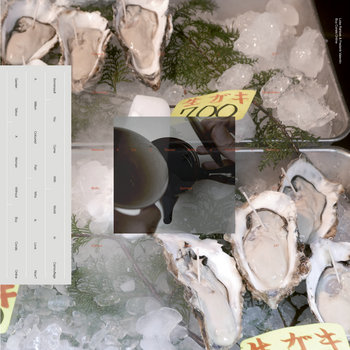
First outing for this collaborative effort from the prolific Posh Isolation mainstay Loke Rahbek and Frederik Valentin of KYO, also on the revered Danish label. As old friends circling around the same scene, this is the first time they have combined their respective perspectives. The results are an ambitious aquatic infused audio environment. Recorded near water at Valentin’s studio within the vicinity of the new aquarium in Copenhagen, Buy Corals Online channels the sensual floating aspects of such environments.
"During Japan’s Edo period (1615–1868) the phrase "the floating world" (ukiyo) evoked an imagined universe of wit, stylishness, and extravagance—with overtones of naughtiness, hedonism, and transgression. Implicit was a contrast to the humdrum of everyday obligation. The concept of the floating world began in the Japanese heartland, migrated eastward, and came to full flower in Edo (present-day Tokyo), where its main venues were popular Kabuki theaters and red-light districts." - Wikipedia
Buy Corals Online arrives as a suite of works embracing the joy of being close to something you don’t require interaction in order to experience. This enchanting aquatic infused audio hovers a sensual world rich in sensory experience. Loke Rahbek & Frederik Valentin’s debut outing conjurers a world both sensual and abstract as it moves casually alongside fantasy.
More information can be found here.
Read More
- Administrator
- Albums and Singles

Apart is a mini-album containing a set of cello improvisations, conceived during days of solemn recording in the basement of an unused industrial space outside of Bern, Switzerland.
"In autumn 2015 I was invited to perform and stay for a week "residency" at the – as it turned out one off - Rebirth Festival in Bern, Switzerland. I was staying at an abandoned farm in the hills, half an hour outside the city with the group of young people responsible for the festival. My room was equipped with a mattress on the floor, some strange paintings, and a lot of spider webs. The view outside was straight into an open field with mostly hills, a forest, and some tents, all of which would be covered in fog every morning. By night I was driven to the venue - an unused industrial building slightly outside of central Bern. Three of the nights there I was given a cello, a sleeping bag, full access to the building, and especially its big open basement space for recording. Something that ended up as both a fruitful and an uneasy experience. The walls were spray-painted and the space was scattered with bizarre, elaborate tree / steel sculptures. Most of the rooms was made into some kind of surreal art object, often recalling a sort of Mad Max post-apocalyptic feel.
I realized that getting a clean recording here would be nearly impossible, as the building had a tendency for strange noises, clicks and sounds, seemingly turning itself on and off at random. It was also located right next to the train tracks, which meant I had about 10 minutes of quiet in which to record in between the thunder of passing trains - a lot of recordings were ruined. However, all these off elements somehow had their charm. Having such a big empty space for myself, filled with strange installations and sculptures set up for the festival, was both inspiring and eerie. When not playing and just sitting still, it was unnerving. The lights were on motion detectors and would automatically turn off after 5 minutes without movement, leaving me alone with nothing but a small lamp and my thoughts. Sometimes I wished my imagination would be less vivid, as I'd have an easier time not imagining all kinds of obscure happenings in the shadows. Then again, this is also something that intrigued me so much that I felt no choice but to investigate closer. Spurred by this intrigue/paranoia, I would often walk around the empty building to soak up the atmosphere and check if someone was there." – Svarte Greiner
More information can be found here.
Read More
- Administrator
- Albums and Singles
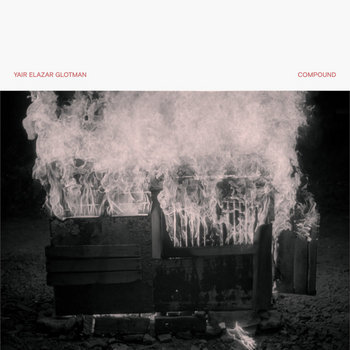
Under his guises Blessed Initiative and Ketev, as well as his own name, composer and sound artist Yair Elazar Glotman has explored extended techniques and processes to forge new sonic textures and musical forms. Compound picks up where the previous solo work under Glotman’s own name - 2015's Études - left off. The acoustic sound palette has now expanded from solo contrabass into a trio including pianist Rieko Okuda and percussionist Marcello Silvio Busato.
Glotman guides the trio into utilising sounds from the edges of their instruments' abilities - arguably mere byproducts of harmony - and through improvisation, repetition, and post- production, conjures new sonic bodies over two sidelong pieces. His guidelines for each improvisation gave the players autonomy to emphasize the microscopic details of certain sounds: the shudder of a piano key, the hum of a cymbal, the incidental click of a plucked contrabass string. The recordings were then layered and reformulated by Glotman into two separate structures to complete the composition process. Both "Veil" and "Revelate" utilize the full spectral potential of each instrument, revealing new rhythmic patterns and harmonic content in the process.
Taking Glotman's microscopic focus on instrument noises he put began on Études as a starting point, the trio on Compound ultimately bring into question both density and contrast, rhythm itself losing its stricter structures and becoming a purely pattern-based driving force in the music. The resultant unit contradicts and opposes itself, all sorts of clashing rhythms and melodies coexisting within the body of the two compositions of evolving sonic architecture.
More information can be found here.
Read More
- Administrator
- Albums and Singles

The 6th in the series of limited edition compact disc live recordings (after Thomas Köner & Jana Winderen, Simon Scott, Bethan Kellough, Yann Novak, Robert Crouch) brings Philip Jeck live at Iklectik, London.
More information can be found here.
Read More